NOTE: Maxine Newell was a life long resident of the Colorado Plateau. She was born in Dove Creek, Colorado and lived in Monticello and then Moab until her death in 2015. Maxine and I worked together at Arches NP in the 1980s; she was one of the most interesting people i have ever known. Years ago, she gave me several stories she’d written about her ‘growing up years’ in Dove Creek and we’re happy to offer them to our readers…JS
We were young, my sister Fern and I, three and four, as I recall. Our short legs dangled from the springboard seats of the wagon, mine from the quilt-padded one in the back between Mother and Grandmother; Fern’s over the green board seat in front where our Dad was letting her hold the reins to keep black Bill and white Kate plodding down the dusty road.
We were returning to our homestead after meeting Grandmother at Dove Creek. She had just arrived from Missouri to check on her family. Her three sons, Noel, George and Fendol. “The Sitton Brothers” had left Missouri to pioneer on western homesteads, as had her eldest daughter, Davie and her husband, Oliver Hays. Perhaps Grandmother had dreams of luring them back to Missouri, but it didn’t work out that way. Instead she returned to Missouri, sold the family farm, and returned with her youngest daughter, Margaret, to file on her own homestead. Great Grandma Thompson, Grandma Sitton’s mother, came with them. My grandmother was never content unless she had her whole clan within a reasonable proximity.
This day, however, on her first visit to the homestead, we were all excited. Grandma Sitton had come to visit! My sister Fern and I wore pink and blue look-alike dresses—no western garbs for our prim mother’s children! Our matching parasols were a gift from Grandma. Fern dropped hers beneath the wagon wheel and we had a crisis. Grandma consoled her with, “There, there, we’ll get another by and by,” little knowing then that it was a promise she couldn’t keep. The limited stock at the P.R. Butt store in Dove Creek did not include feminine frills.
Grandma’s enthusiasm on her visit to our Utah homestead shortened the twenty-mile ride. Even Dad was more patient and stopped the horses beneath a snarled juniper tree to let us explore. The team welcomed the rest and stood belly pumping a new supply of oxygen to their lungs. Mother spread a fried chicken lunch beneath a juniper tree while Fern and I darted in and out of the sagebrush to pick handfuls of blue lupin, scarlet paint brush and a few waxy white sego lilies. And Grandmother! Grandmother was standing shoulder deep in sagebrush, her arms raised in exaltation. She had discovered tiny purple blossoms on the tall clumps of sagebrush that lined the dirt road. Her demands to dig a clump on the spot for a flower garden brought a snort from Dad. It did seem like a ludicrous suggestion. As far as we could see in all directions, the flat land was a bumpy mat of greygreen sage, the uniformity broken only by an occasional juniper, which, from a distance, appeared as a dark blotch on the grey blanket. I think of her now, though, each time I travel the winding paved road that connects Dove Creek with the rest of the world. As far as the eye can see, the land is covered with green and gold crops, or freshly plowed red loam. The sage has mostly been grubbed away.
Sagebrush was the homesteaders first nemesis. It had to be removed to bare the soil for planting. The settlers wielded grubbing hoes by hand, sometimes pooling labor at hoeings. Horse-driven rakes scraped the downed brush into winrows for burning. The countryside glowed at night as the settlers fired their day’s take, and the smell of burning sage permeated the air and saturated our pine-board cabin. The aroma of brush fires and lye-scrubbed pine floors are treasures in my memory box. The scent of fresh-turned soil is another memory. Musty, sagey, whatever goes into the making of virgin soil yields a perfume that is nature’s guarded secret. Even if the land sits idle for years before it is turned again, it never smells the same.
The land of our Urado homestead was in Utah, adjacent to the Colorado boundary. It was on the fringe of what is now known as Utah’s Canyon Country, and but a few miles as the crow flies from the four corners, which had not yet been named. None of us knew then that we were destined to spend the rest of our lives in one of the four states, nor that our farmer father would one day attend a political meeting at the Four Corners Monument where each governor would dine in his own state.
Most people had a motive behind their westward migration. Our was our malaria-stricken father. The new frontier was supposed to make us healthy and wealthy, and in time it did both. Our ailing father recovered and lived to see 80, and our accumulated riches include a lifetime of freedom, friendships and pioneer experiences. True, there were hardships which would be hard to take now, but we had happiness by the tail. We climb the progress ladder slowly, a rung at a time, each step a new reward, but we keep on climbing. Searching for what? Perhaps for what we had at the bottom rung, after all.
The homestead was twenty dirt miles south of Dove Creek. It wasn’t much of a place, Dove Creek wasn’t. P.R. Butt’s general merchandise store was the main reason for dry farmers to come to town. The store was in the bottom half of a large two-story green and white clapboard house. The walls of the store were lined with board shelves stocked with a limited variety of canned goods, bolts of calico and outing flannel, plus an assortment of other necessities, such as tin plates and cups, tin kerosene cans with long spouts for filling lamps, and one shelf filled with white porcelain dishes, which were sold by the piece.
Leather harness hung from the exposed rafters; wooden barrels filled with flour, sugar and other staples were placed around the floor. A long wooden counter with a cash register on one end and a thread cabinet on the other separated Mrs. Butt from her customers.
A veranda across the front of the building divided the downstairs store from the upstairs level where the Butts lived with the youngest of their four boys. Usually, Mrs. Butt could be found downstairs in the store waiting for occasional customers, while he paced the wooden floor, winter or summer, with a fly swatter in his hand.
At the P.R. Butt store, one could buy a dozen eggs, or trade a bucketful for staple groceries, a zinc wash tub, a piece of harness, or a length of fabric for a new dress or a quilt lining. If the buyer didn’t have enough eggs to cover the purchase, Mrs. Butt dug in her grey apron pocket for the charge book.
One hand-operated gas pump outside dispensed fuel for the half-dozen 1920’s cars in the country. Most travel, however, was by horse-drawn farm wagons with moms and pops riding upfront on the spring-board seats and the kids sprawled on quilts in the wagon bed.
Dove Creek was situated in the middle of a vast plateau of fertile homestead land settled by an assortment of families joining the westward migration for a new start in life. Many homesteaders came from Missouri, Arkansas, and Oklahoma, lured by family members, friends, or word of mouth reports expounding high hopes for the future of the beautiful virgin land. Some settlers came because family propogation had outgrown heritage farms; others came for health reasons, hoping the arid climate could cure malaria or tuberculosis, prevalent in the humid, damp areas where most had grown up. They brought with them Chaucerian-sounding accents and minimum cash from sellouts back home; sadly, many soon discovered farming with nine inches of rainfall a year was different from nine inches a month, and money soon dwindled away. Some settlers gave up and returned home; others stuck it out, but it was some twenty years before they finally capitalized on the one crop they discovered was adaptable to dry farming—pinto beans. Much trial and error, poverty, disappointment, and, finally, World War II, were endured before Dove Creek earned its proud logo, “Pinto Bean Capitol of the World.” The speckled beans proved to be the ideal crop for limited water and a short growing season. Above all, however, pinto beans were the most substantial staple for the fighting men’s mess. During World War II, “Dove Brand Beans” followed the soldiers to Berlin and Tokyo; farmers got rich, or at least better-off, and it began to look like Dove Creek would amount to something after all.
My family were typical homesteaders. They originated in Missouri, settled in New Mexico until drought and sand storms obliterated their broomcorn, then they moved on to finally homestead in Urado, 20 wagon miles from the P.R. Butt store.
Urado is called Bug Point now, although the area is still listed as Urado on maps. It was sparsely settled. Each 160-acre homestead allotment was identified by a cluster of unpainted board or log buildings, a house, a barn or shed, and an outhouse. Our home was a one-room cabin with an attached lean-to bedroom for my sister and me, and, of course, a two-hole outdoor privy a respectable distance from the door. Eventually, a log corral encircled a horse shelter. The most optimistic touch was a root cellar near the cabin door.
The little house was furnished with a wood-burning cookstove, orange crate cupboards, homemade table and chairs, and a double bed with a white embroidered bedspread over a fluffy feather bed. Woe be to any of us who made a sits mark on that feather-bed! Pioneer women clung to various degrees of respectability; my mother’s was the feather bed and a wood floor scrubbed yellow with lye soap and a bucket of precious water from the rain barrel by the door. A two-mile wagon ride to a rocky hillside spring to refill the barrel was the weekly recreational outing. On the way, especially if my grandmother was visiting, we detoured to the Wilson ruins and dug in the rocks for pottery. Grandmother, who was the only one who coveted the black and white pieces left by ancient Indians, ended up with a prized collection. Fern and I carried home broken pieces , pottery shards we now call them, for playhouse dishes.
Our father proved up on his first 150-acre preemption in Utah, then was granted another contiguous 160 acre homestead over the state line in Colorado. This land, too, was blanketed with sagebrush and juniper trees, which had to be cleared before crops could be planted. My mother worked alongside my father chopping sagebrush roots with grubbing hoes, then our father would hitch our two horses, white Kate and black Bill, to a rake and pile the downed sage in long winrows for burning. Nights produced colorful fireworks as the rows of sage from the day’s clearings were set afire by the neighboring homesteaders. The flaming rows could be seen for miles, and the air was sage scented.
Maxine Newell was born in New Mexico in 1919 and moved to Dove Creek, Colorado a year later. She moved to Moab, Utah in 1948 and lived there until she passed away, in 2015. Click here to read our interview with Maxine from 1995.

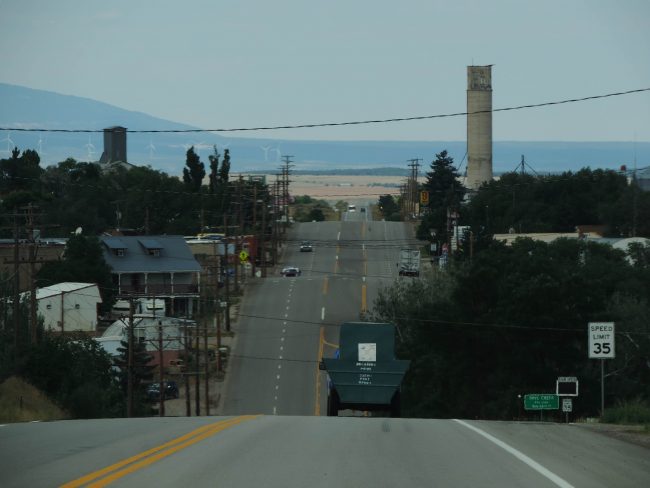
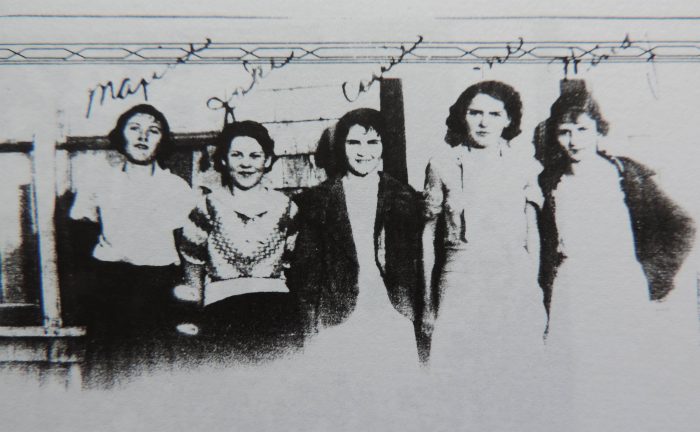
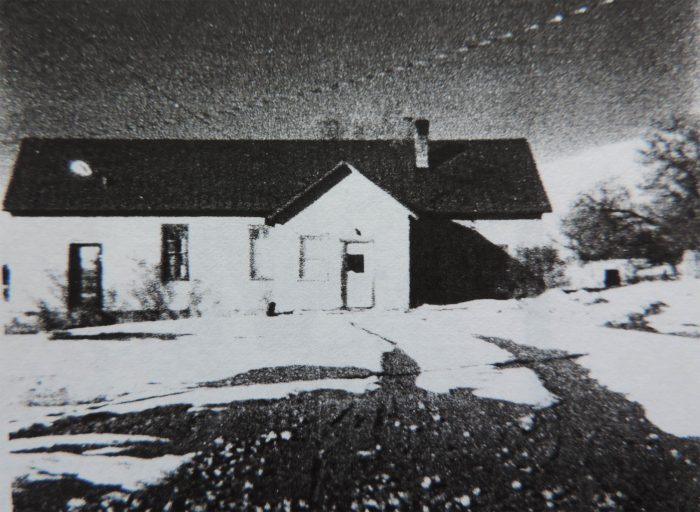
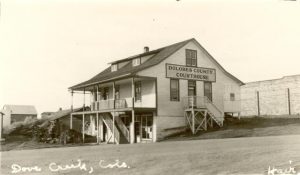
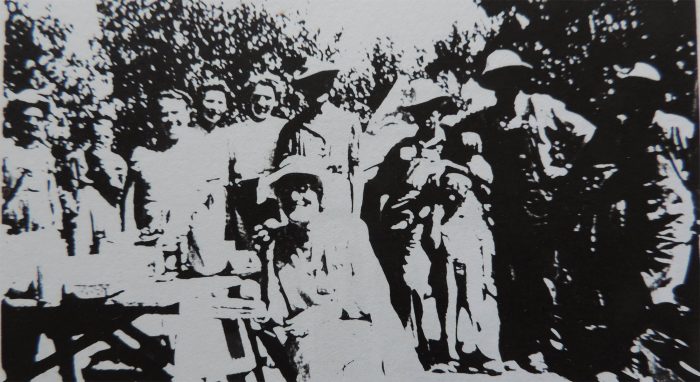
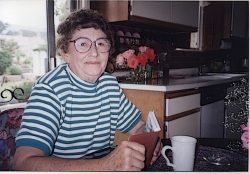

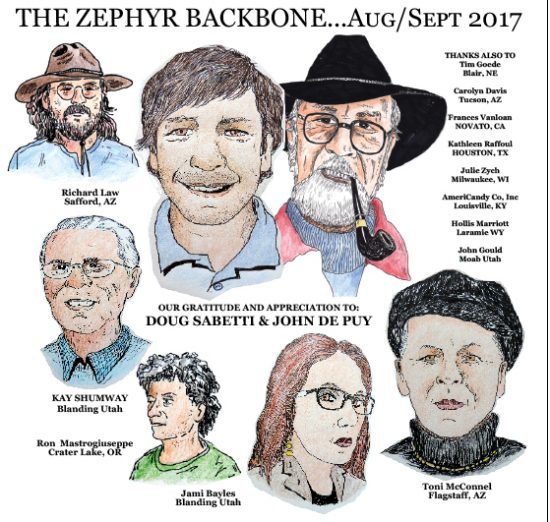





Thank you for the information I loved it. Especially the part about my great great grandfather Parley Butt.
Love this article about Dove Creek. Remember the Sittons, Butts & Rich Families. My family were great friends with the Rich Family. We moved to Dove Creek in 1947 & lived in Ern Hall’s house. My Dad’s Jewelry Store was in the Hall.great Memories!!!!!
Hi Lucy! When did Grandpa and Grandma leave Dove Creek area? Dad talked about living on Summit Point.
Some time after 1978. Grandpa was still there in Dove Creek after Grandma Garcie passed.
Wonderful brings back so many memories! Just as it was. So blessed to have lived there and raised a family in this great place. My grand father homesteaded here in 1917 and we have been fortunate enough o be here since. I have visited many other places but here is still home! Thanks Jim for writing down what I should have years ago!